
Photo: Mathias Svold and Ulrik Hasemann.
STILL PICTURE STORY
by Mathias Svold and Ulrik Hasemann – made as their final BA project in 2017.
In Denmark we never find ourselves farther than 50 kilometers from the ocean and the coastline remains a deeply ingrained part of Danish identity. It is a work place, a sanctuary, a tourist attraction and a political battleground. A scene on which both everyday moments and historical landmark events play out.
COASTLAND is a photographic journey along the coasts of Denmark, depicting life where land meets water and man meets nature. Through the project the photographers show how we have impacted the coastal landscape on every level imaginable for centuries. We have reclaimed land, build groynes and dikes, designed beach parks and interconnected islands by bridges and tunnels.
The coast grants us space for community and reflection and for more than a century, public coastal access has been protected by law. But the threat is omnipresent. The sea mercilessly eats away at the coast, placing houses and fields at risk, while climate-change creates fear of devastating floods and rising water levels. Even today we are unable to control the forces at play.
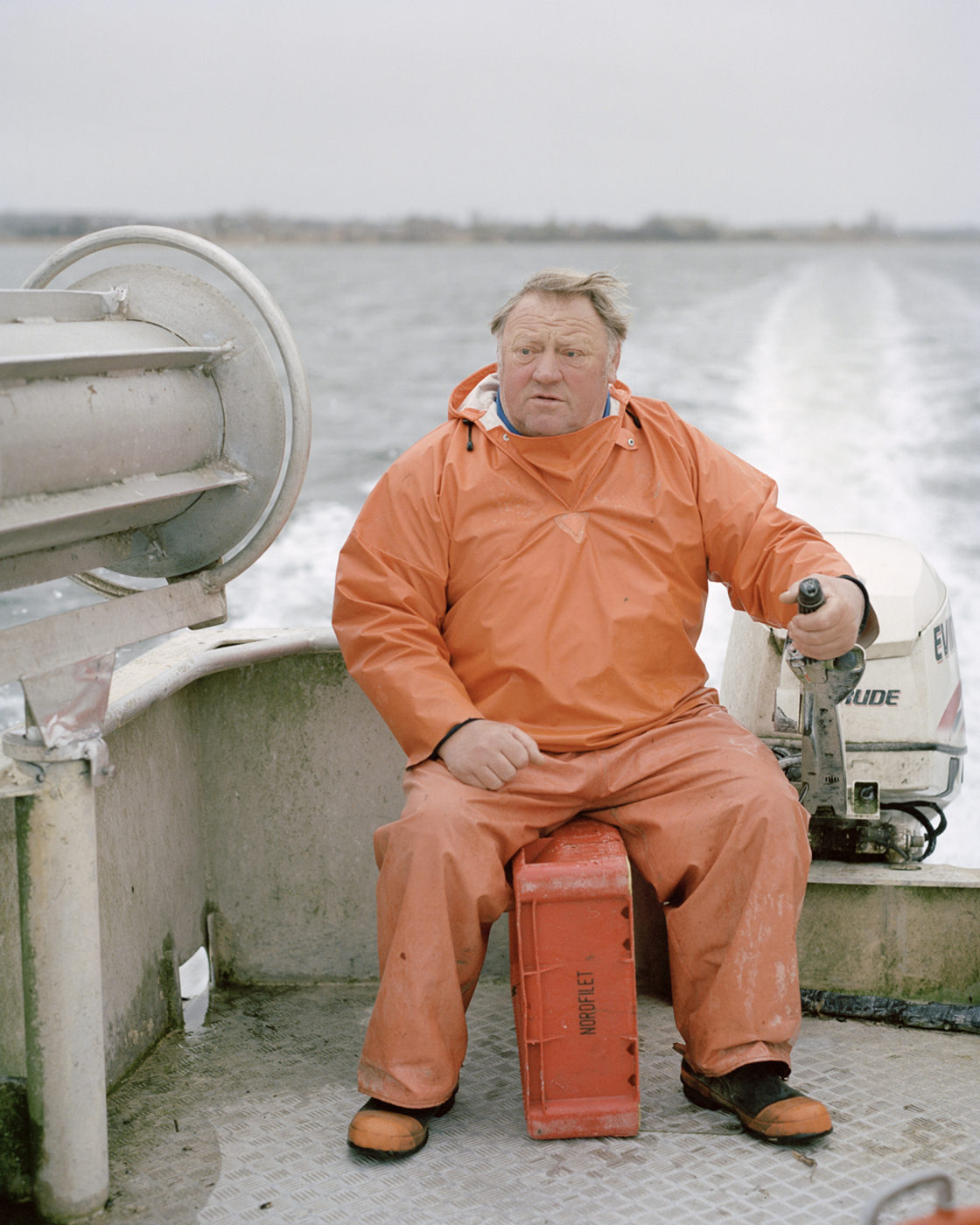
harbour to sail to his fish traps. He has 3,000 of them, because it takes a few, as he says. Cextin, along with his son Lasse, is one of few remaining commercial fishermen who still fish the narrow waters between Lolland and Falster. “Agriculture is very hard on the fishing here,” Cextin says, explaining the declining fish population. “Also seals destroy the yarn, and the cormorants eat many fish. And eel quotas are almost gone.”
Photo: Mathias Svold and Ulrik Hasemann.
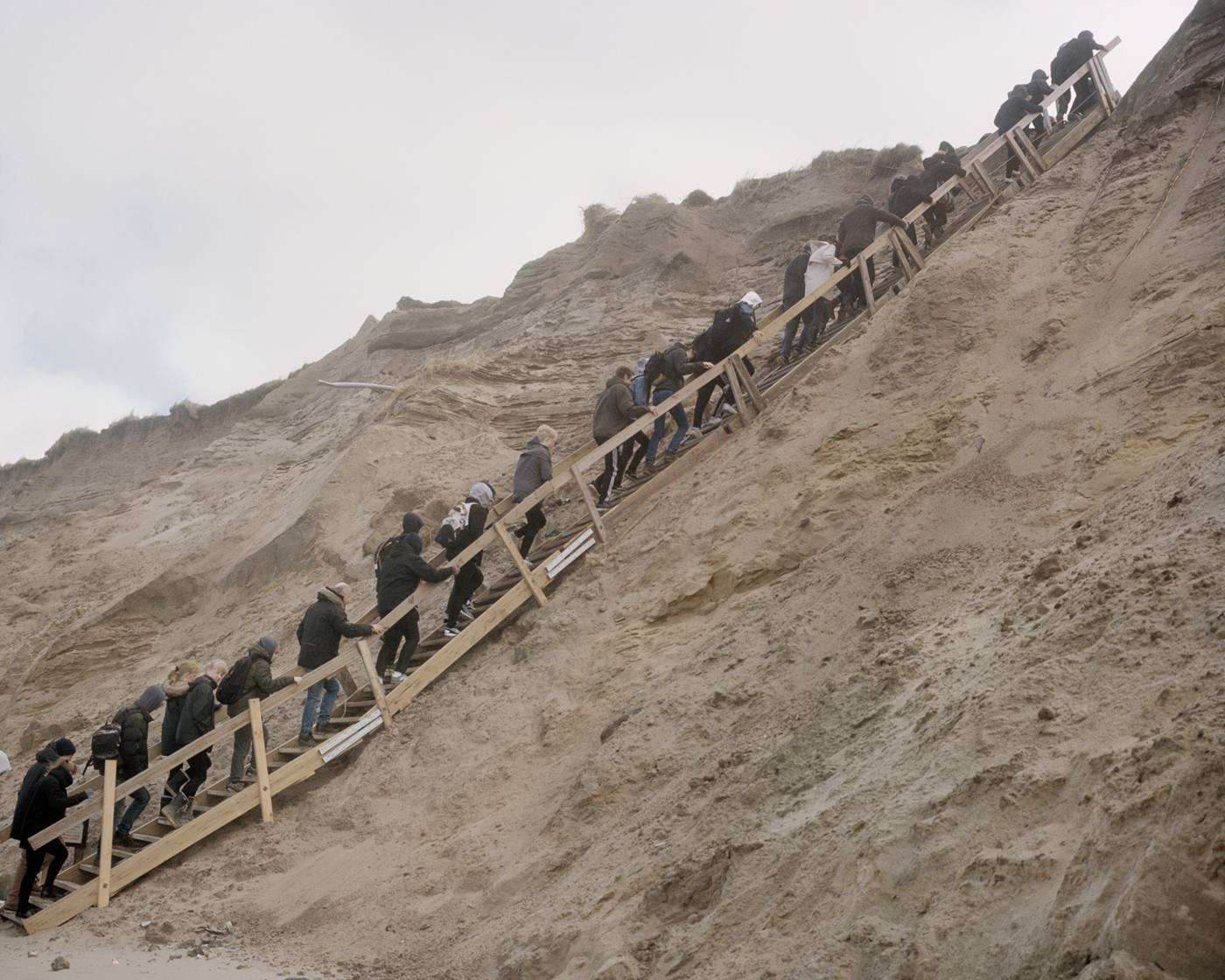
slope. He is a geography teacher from Støvring High School taking his 2.b and 2.c classes on a
field trip. They need to learn about coastal formation, which is a highly visible process here at Nr. Lyngby, on the northernmost part of the West Coast. The sea is eating the slopes, and during the last 50 years, almost 50 meters have disappeared. Half the local cemetery has crashed into the sea along with several holiday homes.
Photo: Mathias Svold and Ulrik Hasemann.
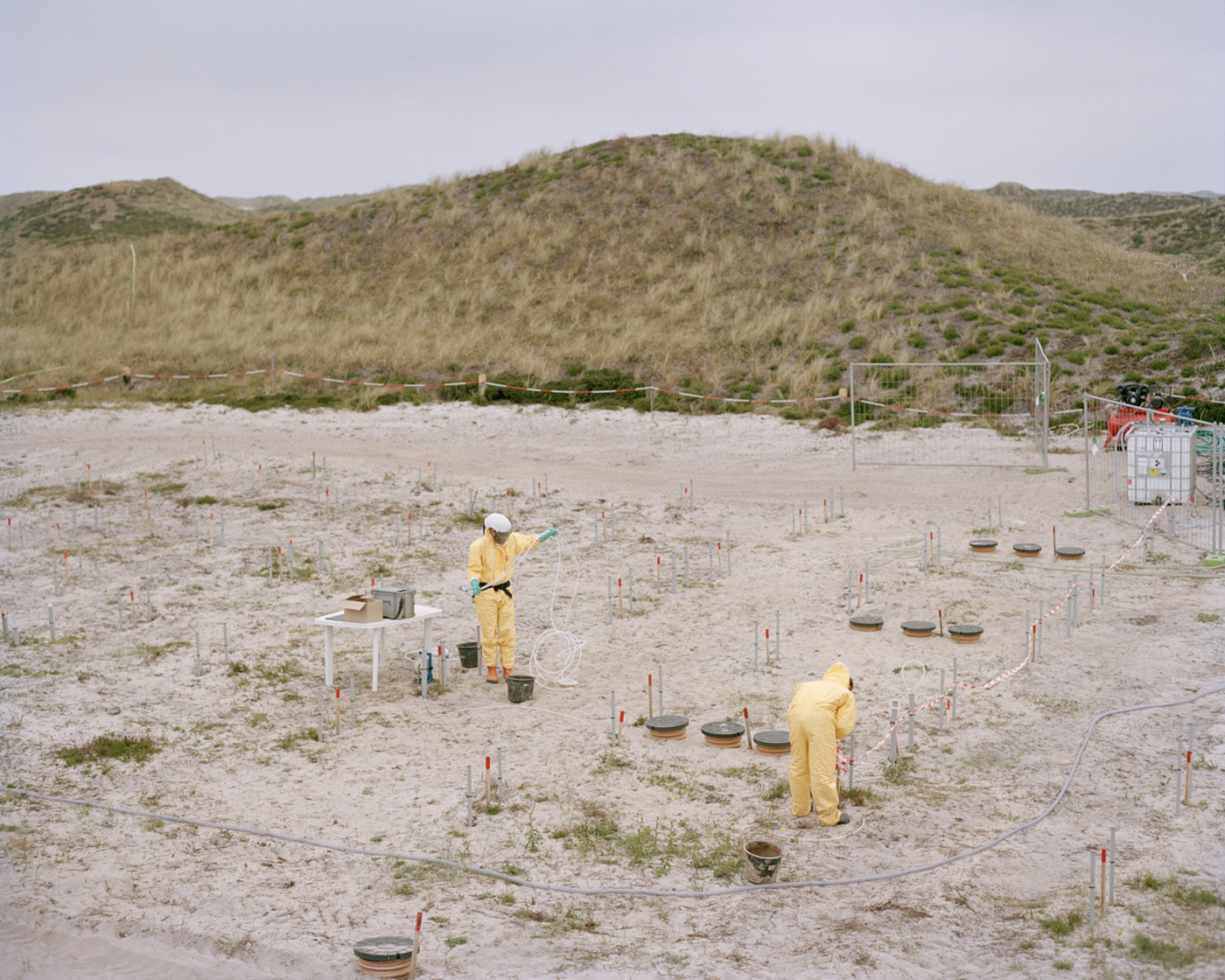
chemical pollutions are buried. From 1956 to 1973, the Grindsted Plant dumped nearly 300,000 tons of toxic wastewater from pharmaceutical production, containing chlorinated solvents, cyanide, benzene and mercury, among other things. The soil has been moved and attempted cleaned several times, but there is still pollution from the area seeping out into the North Sea each year, and a swimming ban is enforced along the coast. The authorities are now attempting a new clean-up, which explains why Allan Ravn and Christian Quebec are working in the area wearing protective suits. Following a carefully designed protocol, they pump chemicals into the dunes, which neutralize the toxic substances, and then later add bacteria which will degrade the remaining contaminants.
Photo: Mathias Svold and Ulrik Hasemann.

Photo: Mathias Svold and Ulrik Hasemann.
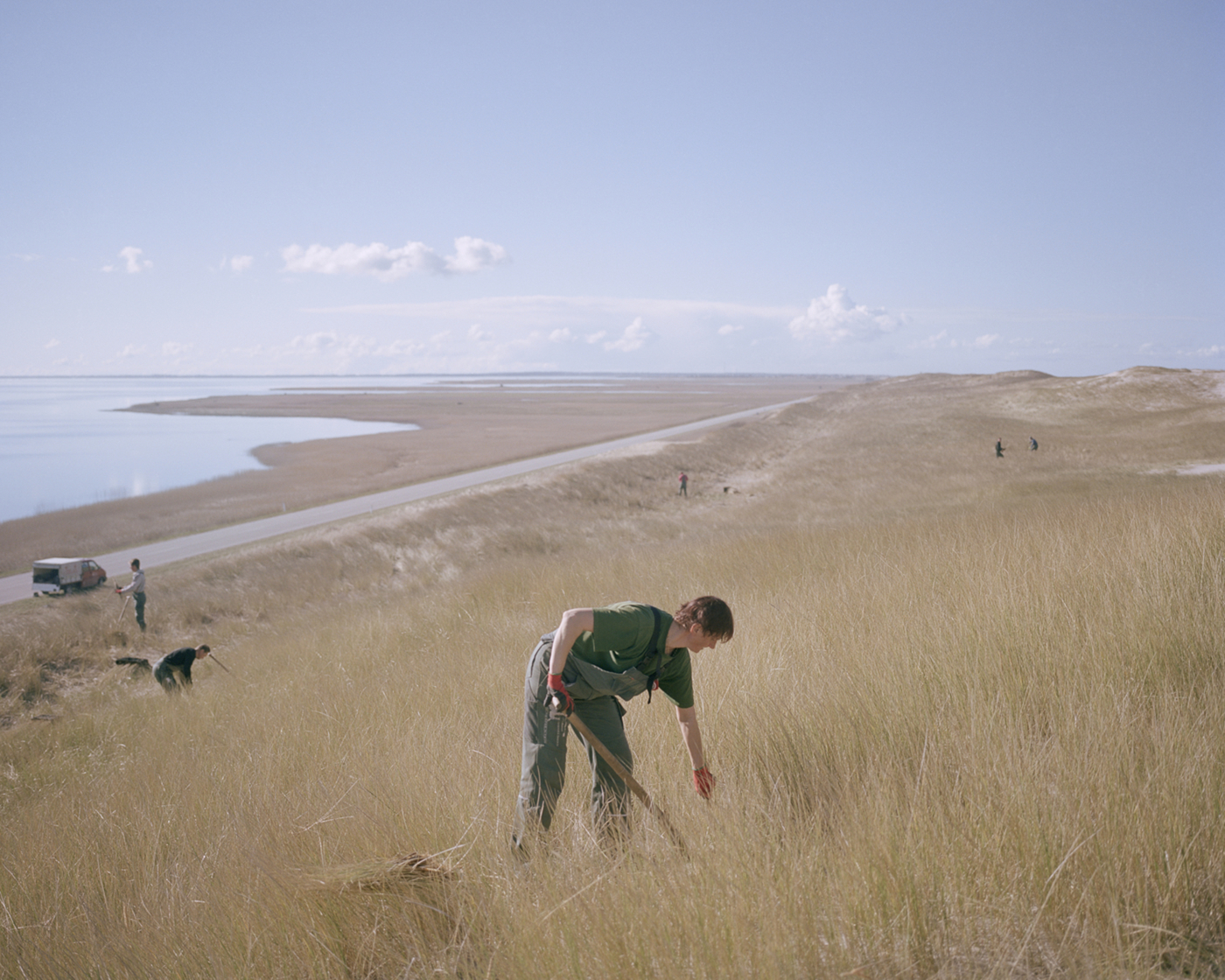
beachgrass. The Latin name of the grass species, Ammophila arenaria, means ’sand lover’, and it grows well in the sand along the West Coast, helping to shape dunes in the process. The
gardeners dig up the grass with roots and replant them further along the dike. The European
beachgrass grows crosswise through the dunes and the broad straws create shelter, minimizing sand drift. It is a continuous effort against the forces of nature, carried out by the government year after year. If the sand of the dune dike along Nissum Fjord were allowed to blow away, the fjord would subsequently be flooded by the intense waves caused by heavy storms.
Photo: Mathias Svold and Ulrik Hasemann.
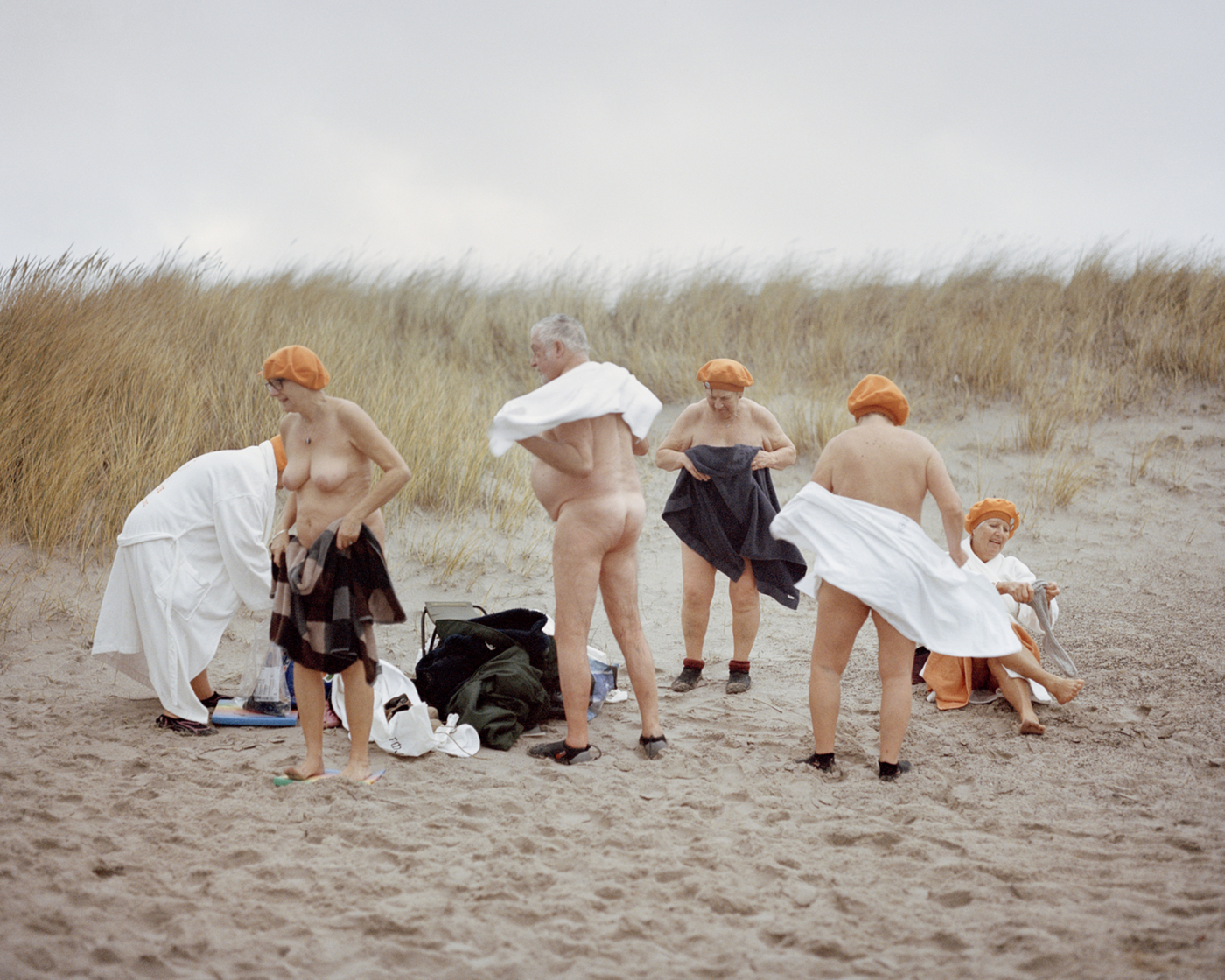
Photo: Mathias Svold and Ulrik Hasemann.
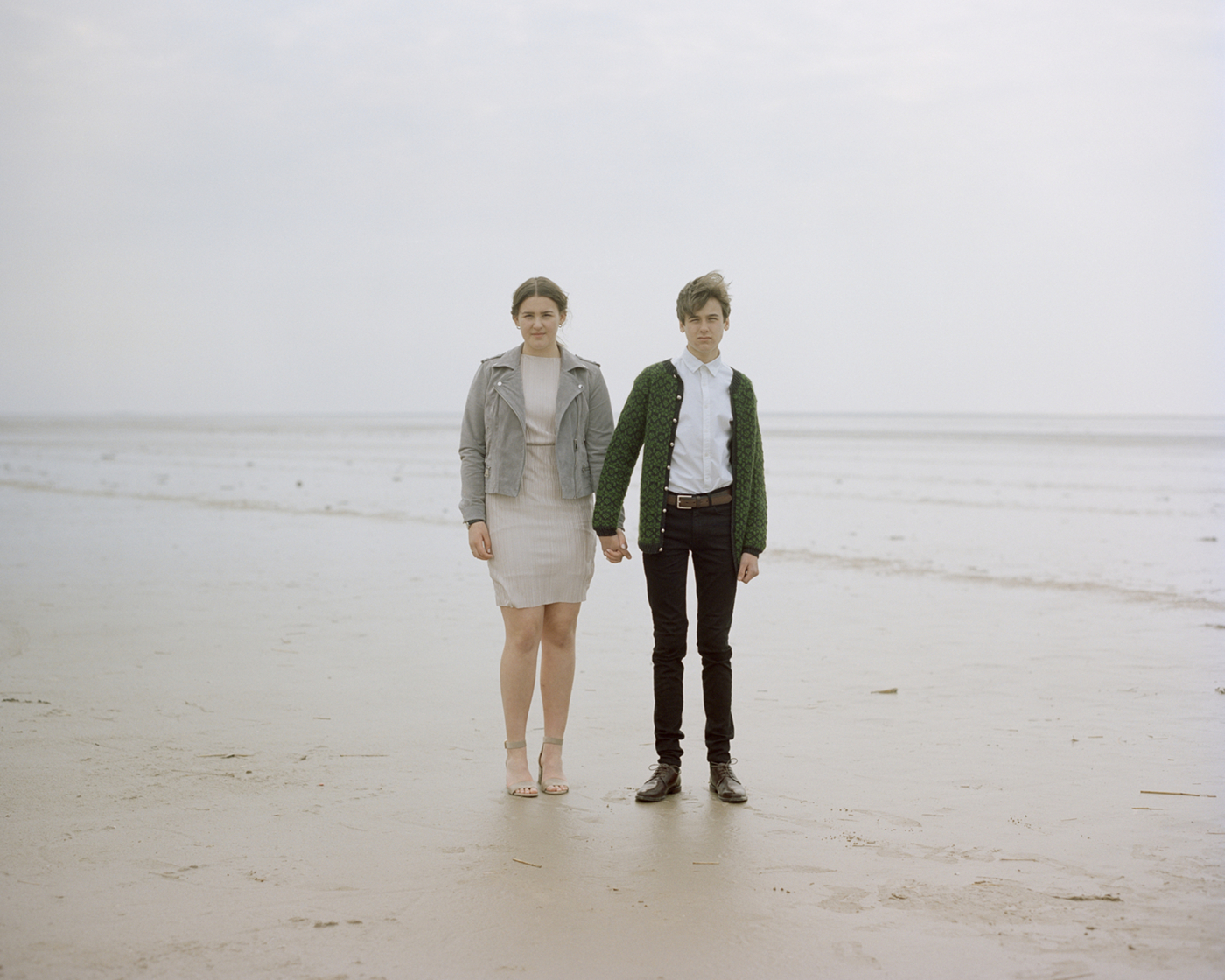
Photo: Mathias Svold and Ulrik Hasemann.
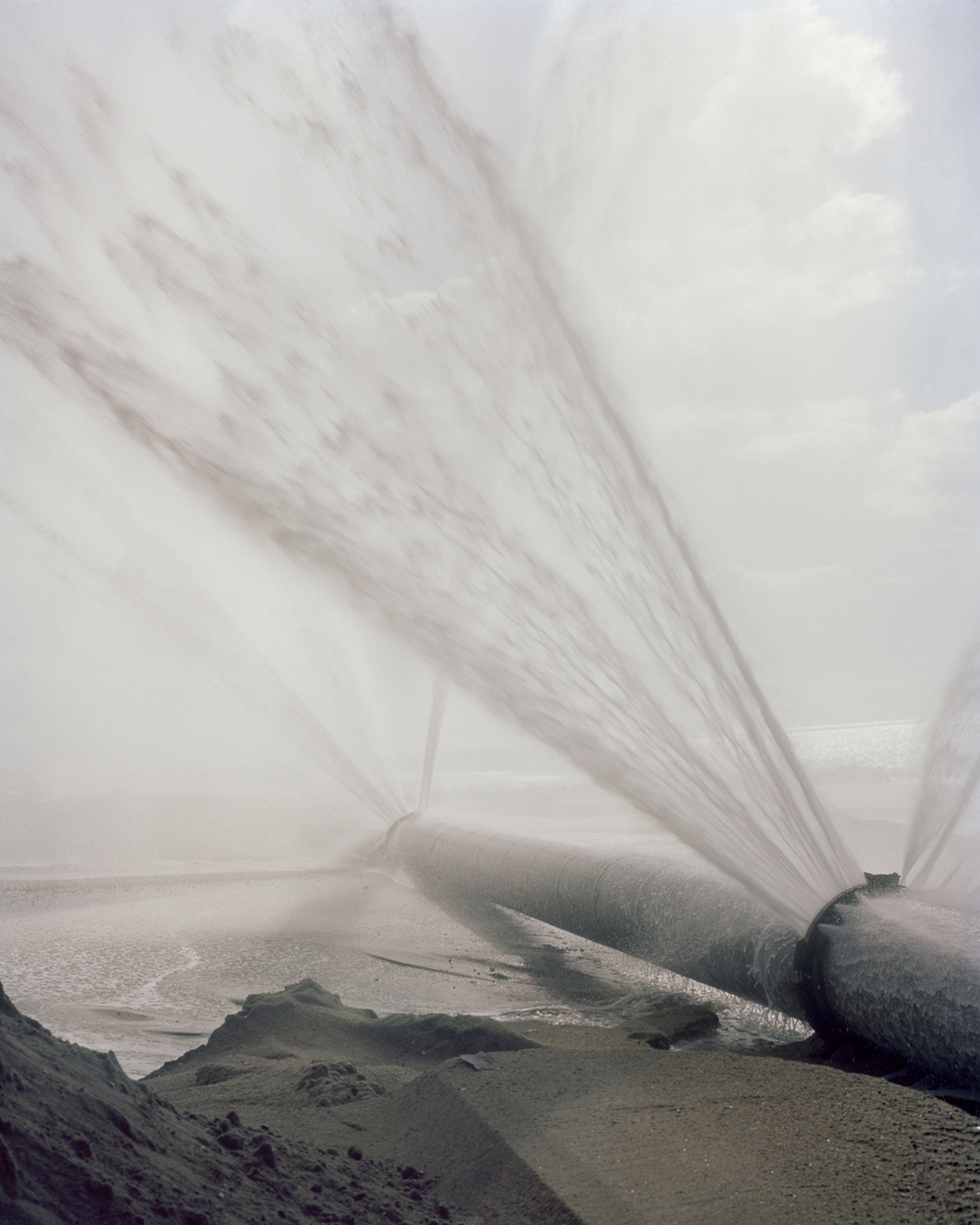
Directorate is extensively adding sand at Vejlby Klit, which is one of the most vulnerable erosion spots. A ship pumps up sand from the seabed through a tube to the coast, where it is sprayed across the beach, increasing its height by 2-3 metres in some places. The sand added to the West Coast by the sand ship in a year, exceeds the equivalent of 85,000 truckloads. In a few years, the process will have to be repeated, when the waves have reclaimed the sand.
Photo: Mathias Svold and Ulrik Hasemann.

Photo: Mathias Svold and Ulrik Hasemann.
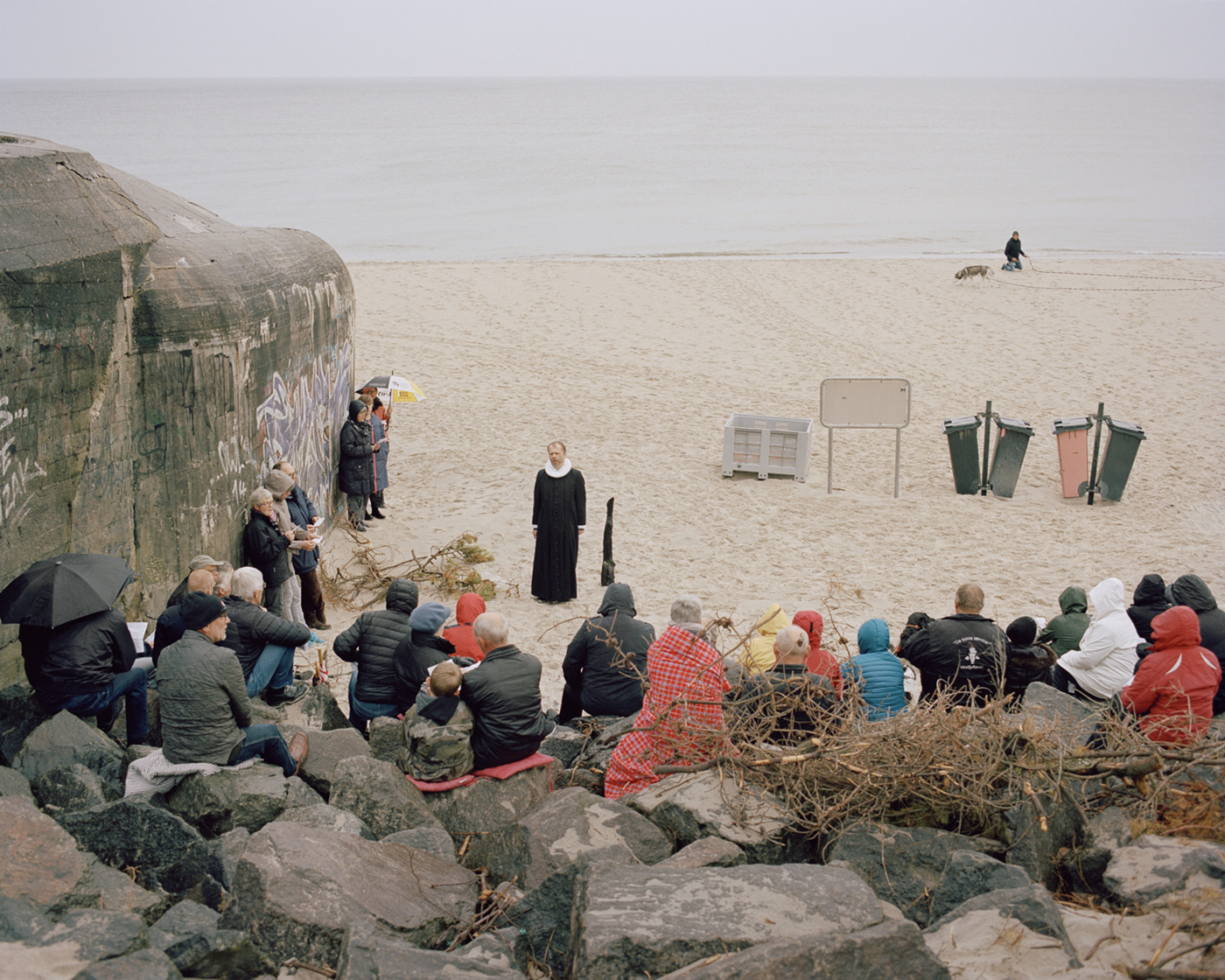
his long, pitch-black cassock across the sand up and down the shoreline. He has arrived ahead of time to collect his thoughts, gazing at the horizon. Ole is the priest of Nysogn Church near Ringkøbing and regularly does church services on the beach during the summer months. He welcomes each attendant with a firm handshake and a “come inside”, referring to a formation of boulders. A group of 45 souls have defied the rain and are now gathering around Ole. No microphone, organ or altar is used, as, according to Ole, the sea is the finest altar in existence. “The meeting with the sea is always the same and is always new. It is infinite and greater than us; like God. Thus it has a religious significance.” After three hymns, a communion and a prayer, the churchgoers observe a minute of silence as they watch the sea together.
Photo: Mathias Svold and Ulrik Hasemann.
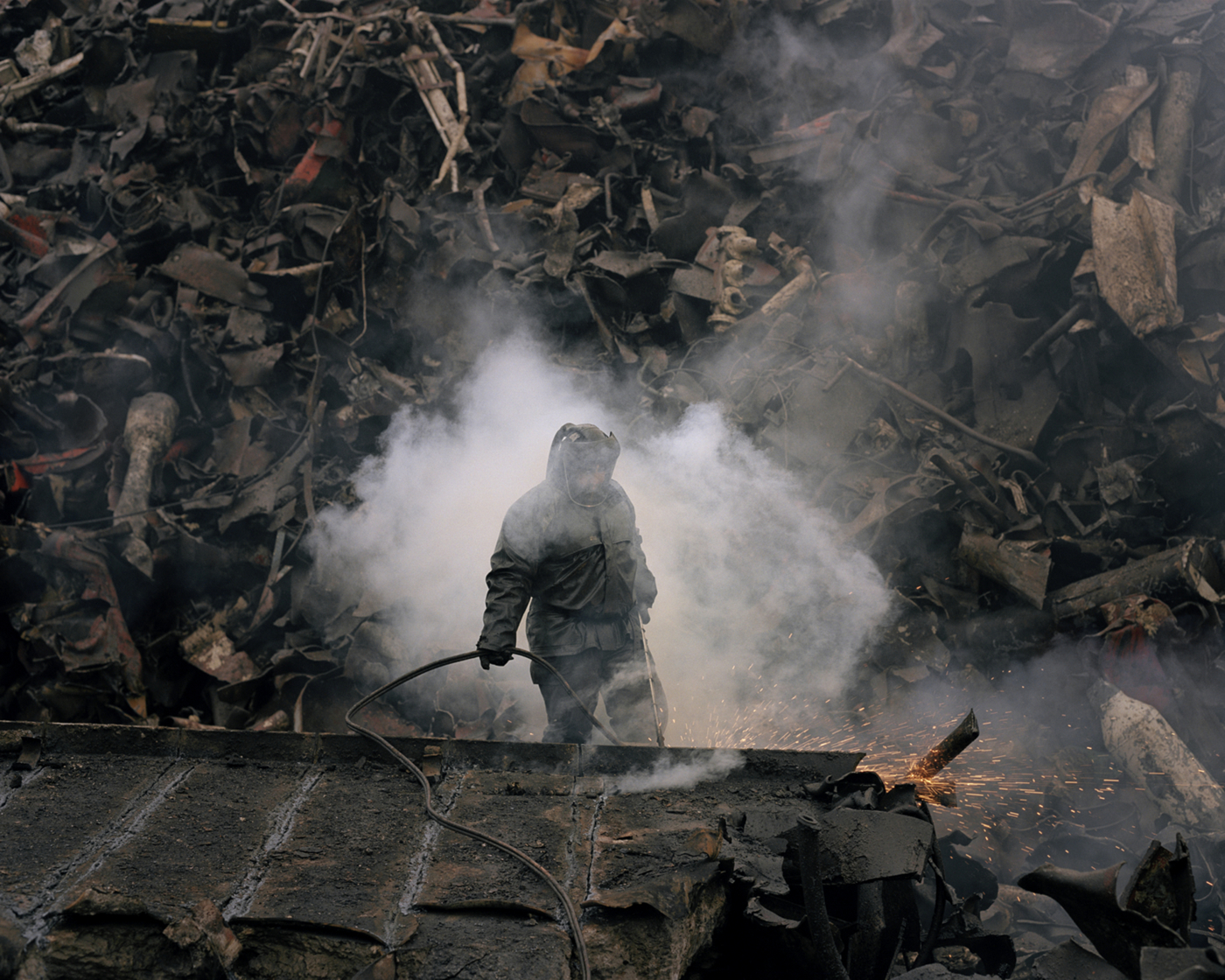
Photo: Mathias Svold and Ulrik Hasemann.

Photo: Mathias Svold and Ulrik Hasemann.
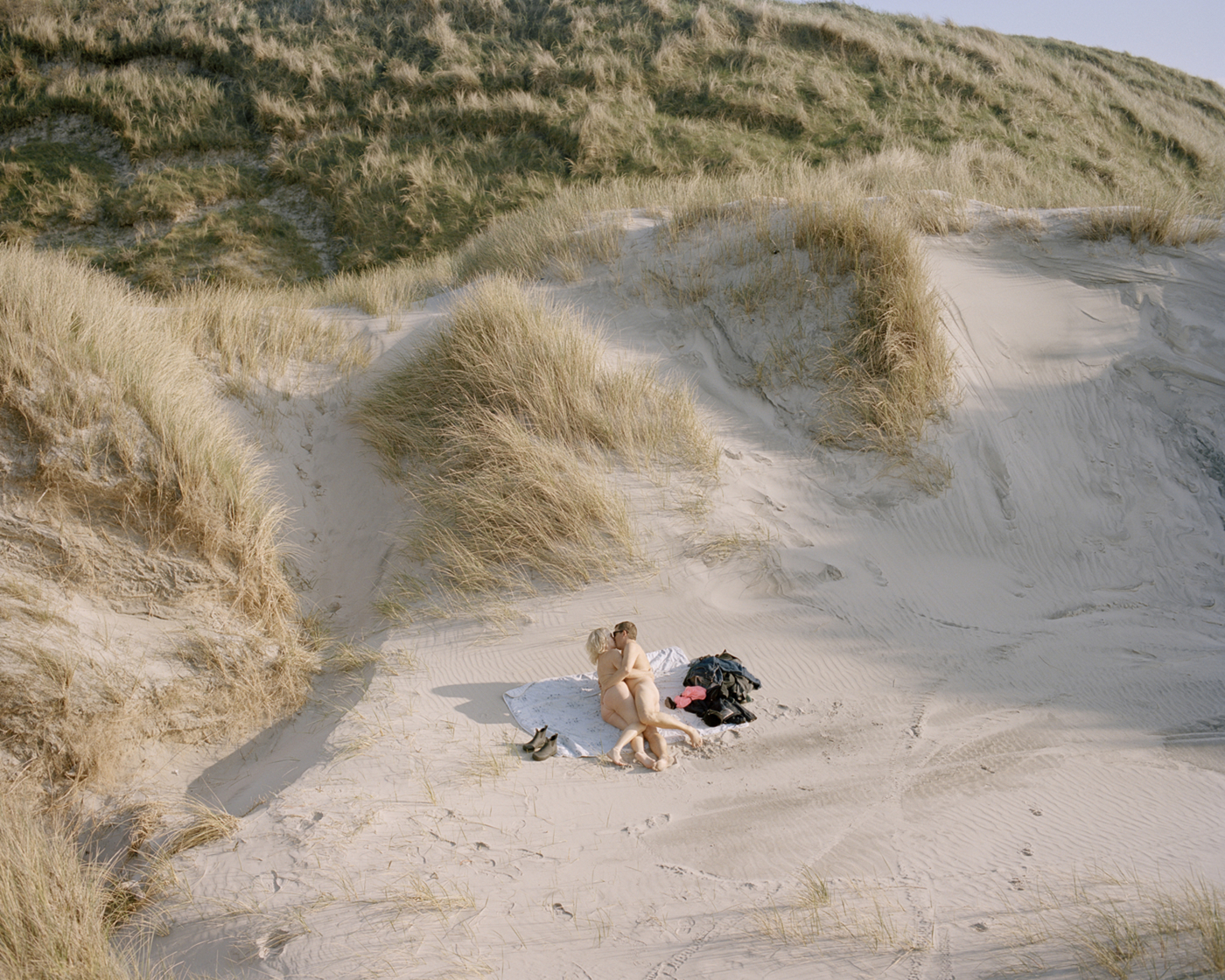
Photo: Mathias Svold and Ulrik Hasemann.
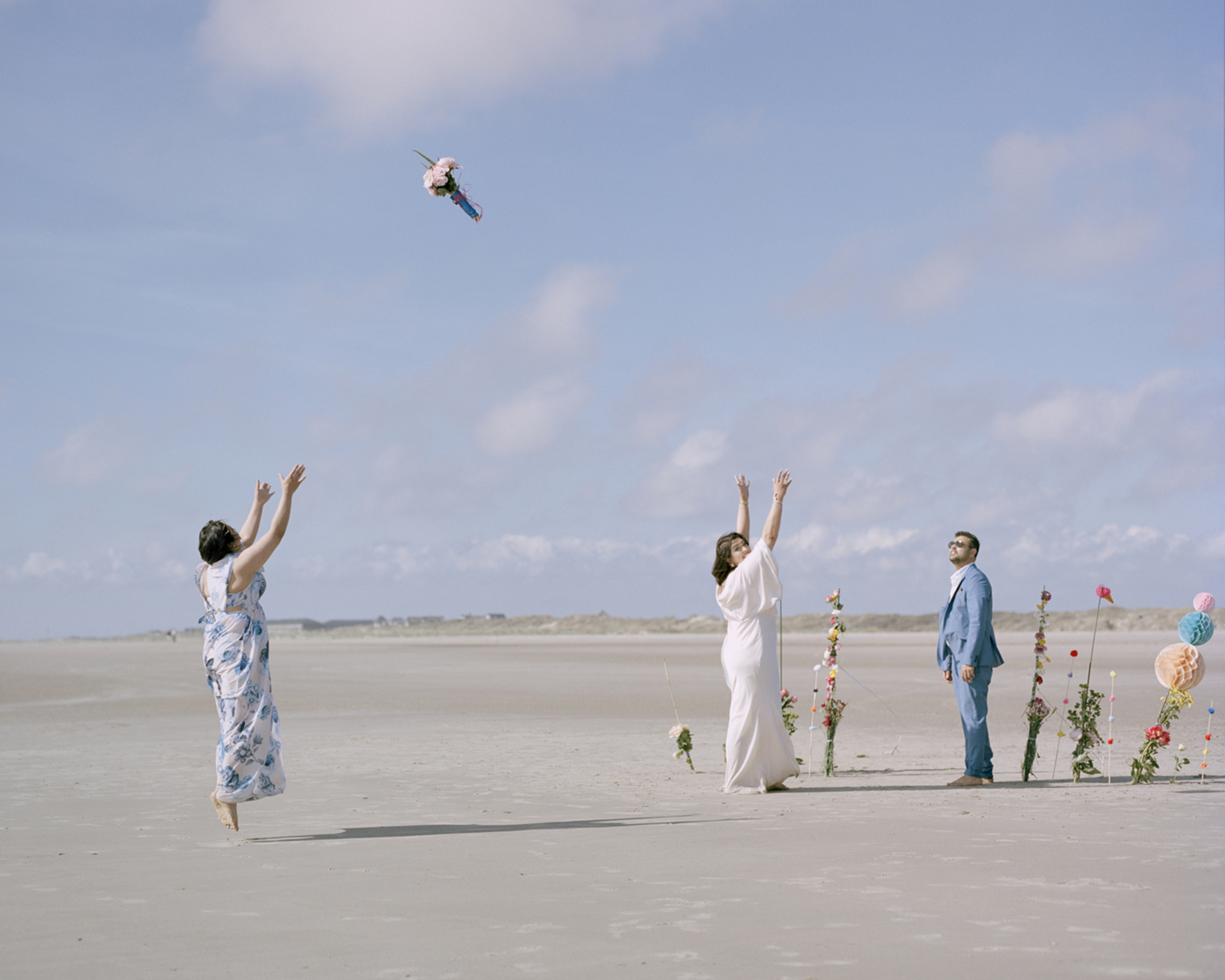
skyrocketed. Today Elaha Kamal and Hamid Ghaussi give each other their ’I do’ with the gentle waves of the North Sea as a backdrop, while the guests happily document every single moment with their iPads, phones and cameras. “When I show the pictures to my friends, they will all want to get married here,” says Hamid.
Photo: Mathias Svold and Ulrik Hasemann.
Mathias Svold and Ulrik Hasemann continued the project in 2018 after their graduation and in 2019 they launched the book and exhibition “KYSTLAND”.



